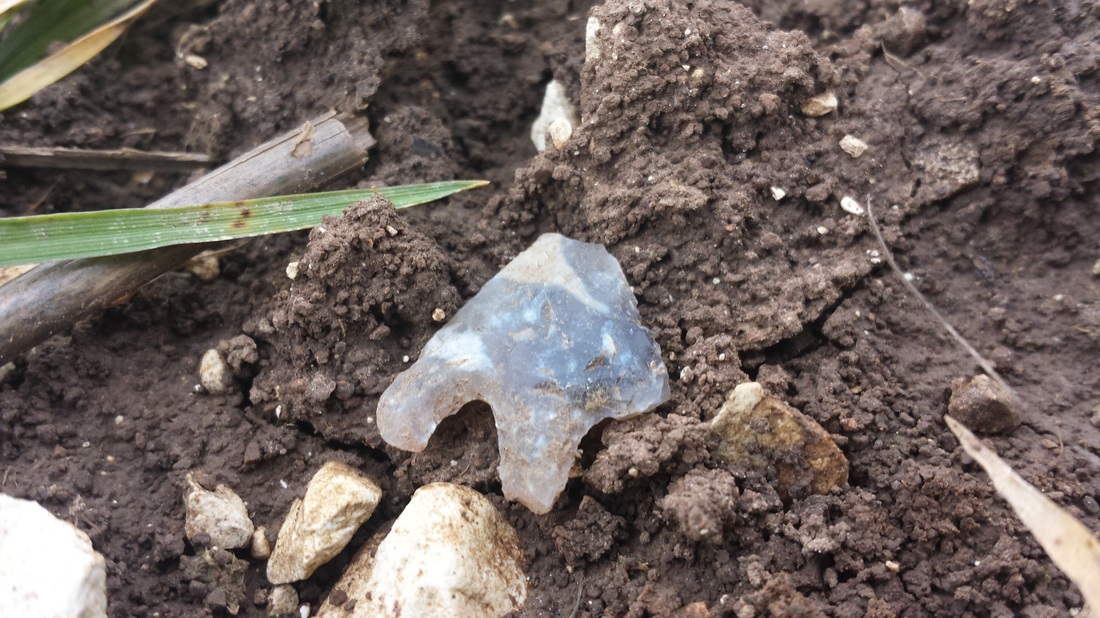 The dark band running L to R behind us is the Roman trackway.
The dark band running L to R behind us is the Roman trackway. We arrived at the newly seeded 160 acre field of which had a much smoother texture to the terrain than when we encountered it last November.
The sun was shining but the wind was very strong. The plus point with the breeze was that it dried out the newly drilled surface brilliantly!
We layered up and tuned the machines to the sound of the Yellowhammer, my first heard this year, and the territorial song of the Skylark.
The machines were set up as last week with the 13" x 11" coils being fitted.
This permission has a very wide range of history and the area we were going to survey has predominantly Celtic and Roman history there. A Roman trackway runs through a number of fields here.
The actual Roman road could be quite easily seen as a dark band running across the field.
We'd just started the survey when the landowner pulled up alongside us in the next field and asked how we were. After a brief exchange we carried on with the task in hand.
It was quite a while before anything of note was recovered which was in contrast to the last visit with a stunning Roman umbonate brooch complete with pin being the very first signal!
One of the first "good" signals on this day however was a small Roman bronze unit in a fairly good condition. This was quite shallow (as usual) at three inches and gave a crisp signal with a reading of 68 on the readout.
A few more Roman bronzes and a small headstud type fibula, complete with pin, came to the surface.
We were surprised at the low level of non-ferrous signals so we decided to have an early lunch and decide our next course of action.
Having refuelled we drove to a neighbouring field which has 80 acres of winter wheat growing there and was still quite short.
The first signal at this location was a nice annular brooch with its fragile pin still attached!
The ferrous signals were very high with "hot rocks" dotted around the landscape. A couple more Roman grots were found and more Roman pottery with a few sherds of C12th to C14th pottery also making a show.
With the field being quite large we decided to have a look at some areas we had never surveyed. A lovely barbed and tanged flint arrowhead dating to the Early Bronze Age period was recovered from the field surface.
In all we recovered 12 Roman coins, 3 brooches, a Roman needle, a fragment of a Celtic button and loop fastener, 2 medieval dress hooks and 4 other unidentified Celtic/RB artefacts. Several pieces of pottery dating from Romano-British to medieval were also recovered along with worked flint pieces including the fabulous arrowhead!
We could see in the distance that the rain was well on its way and it finally arrived so we made the descision to quit while we were relatively dry.
Images of the finds recovered can be seen here.


 RSS Feed
RSS Feed
